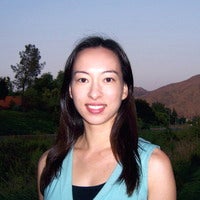RIVERSIDE, Calif. – How do our eyes work? How do our brains process images that allow for, say, the appreciation of art? How does white light contain all the colors? Do carrots truly improve vision?
The public has an opportunity to find out the answers to the above questions at the Riverside Art Museum, 3425 Mission Inn Ave., Riverside, Calif., tomorrow, July 1, when a new quarterly series, named “The Science of Art,” is launched.
Catharine Larsen, an assistant professor of chemistry at the University of California, Riverside, will present the first lecture of the series, titled “Our Amazing Eyes,” in which she will explain, in about 15 minutes, how vision works and then answer questions.
Larsen will give her lecture three times tomorrow, at 7 p.m., 7:30 p.m., and 8 p.m. Admission to the lecture is free, since there is no charge to visit the Riverside Art Museum from 6 p.m. to 9 p.m. the first Thursday of each month.
Larsen and Lee Tusman, the museum’s curator, view the lecture series as an opportunity to educate non-scientists about the science involved in the making and appreciation of art.
“We wanted to get a conversation going with the public on how chemistry, physics and biology in the context of art affect how we perceive and interact with the world around us,” Larsen said. “As human beings we constantly attempt to explain and interpret our experiences. Rather than being polar opposites, scientific research and art are two facets of this human need intertwined.”
Larsen, who joined UC Riverside in 2008, earned her Ph.D. in chemistry at the California Institute of Technology and went on to do postdoctoral research at the Massachusetts Institute of Technology. A former professional ballet dancer, she was the first UC Irvine undergraduate to win a National Defense Science and Engineering Graduate Fellowship.
At UCR, she and her group develop new methods to synthesize small, biologically active compounds with therapeutic potential.
